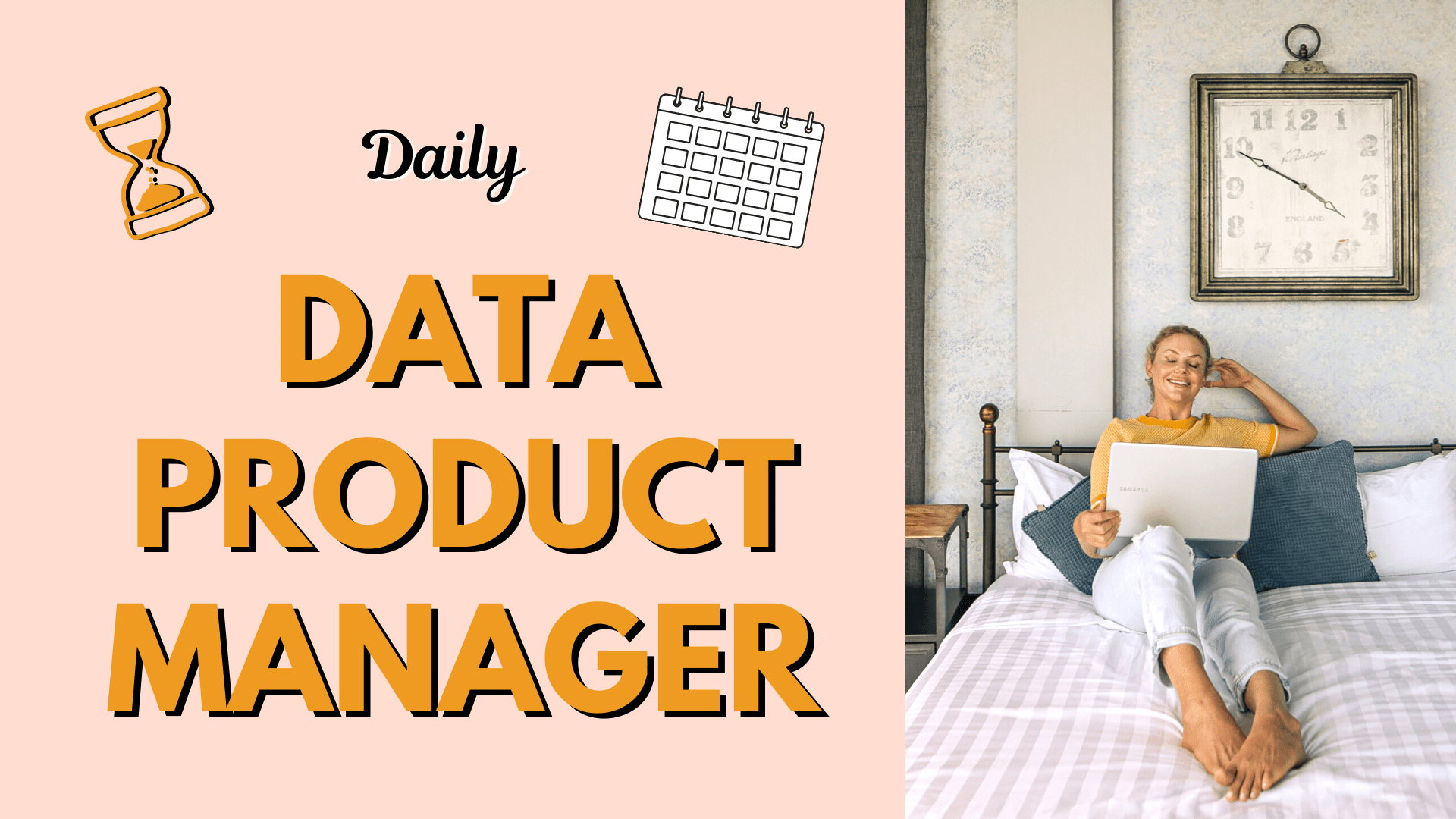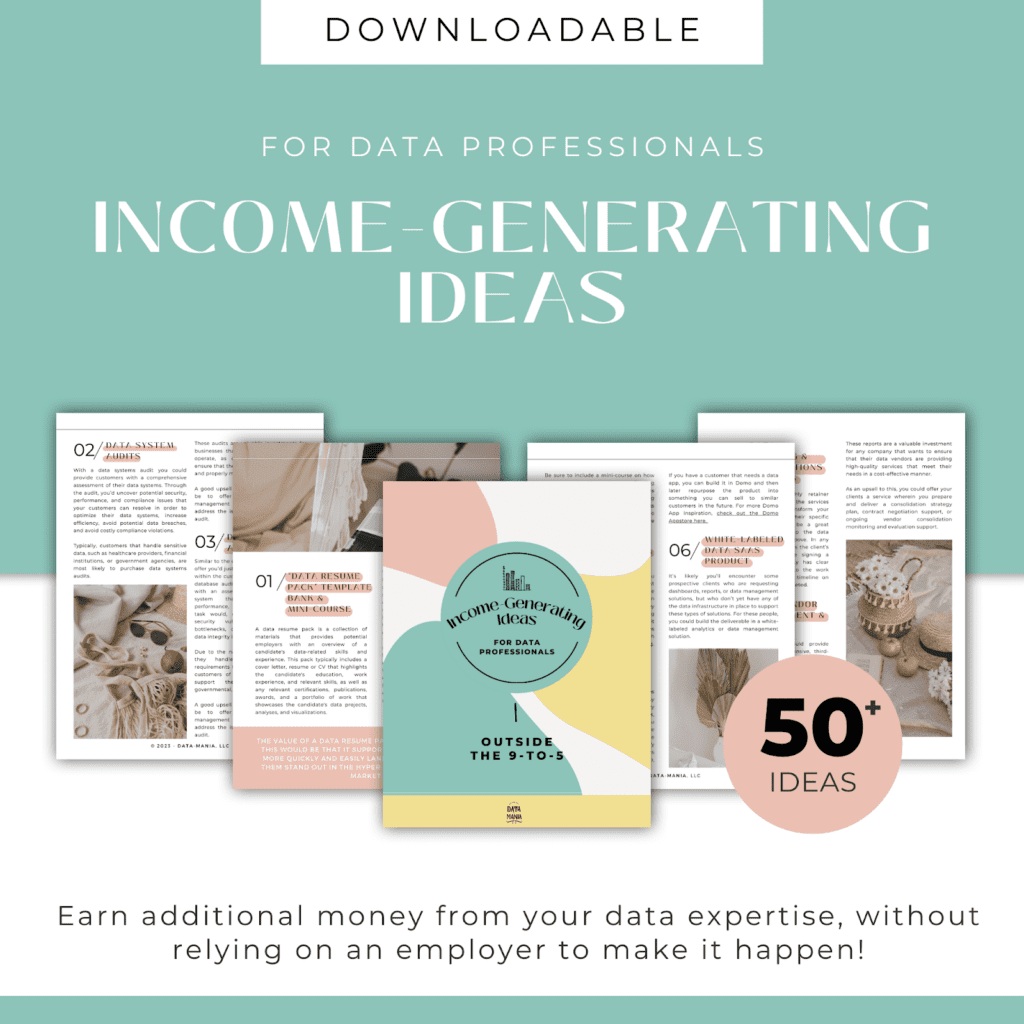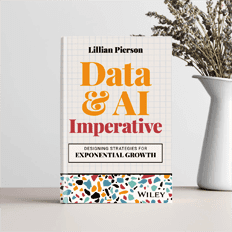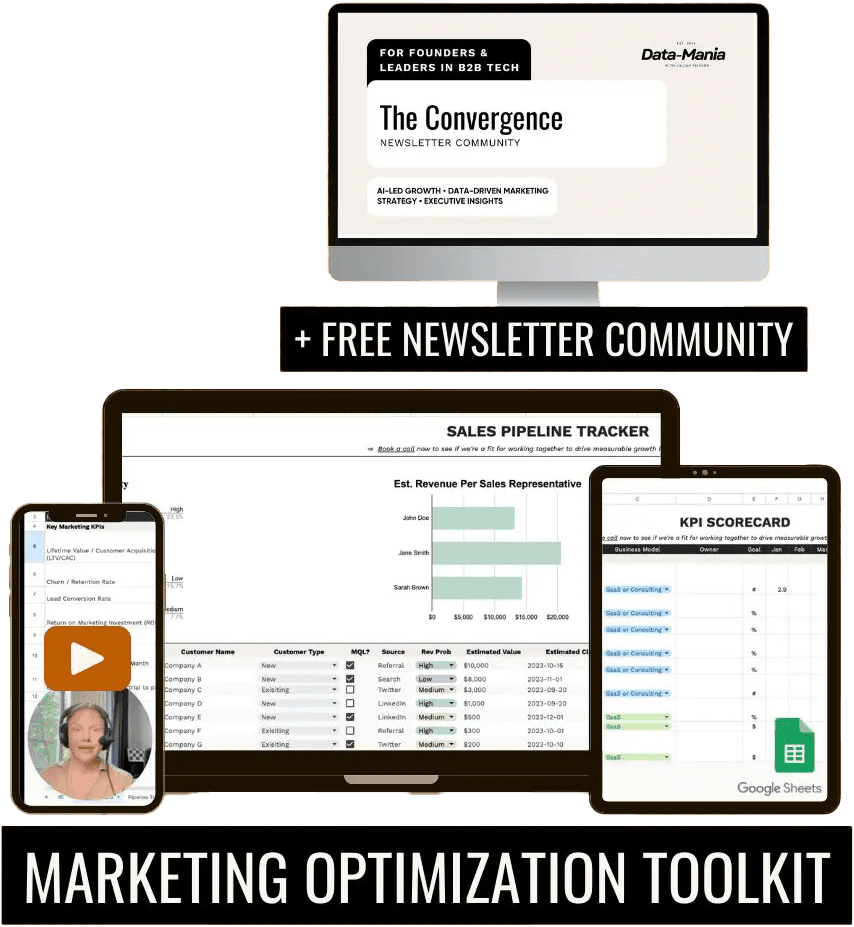Be sure to read to the end because that’s where I am going to show you a cool hack for creating a rockin’ company-themed data product manager CV that is sure to get you a call back.
YouTube URL: https://youtu.be/5T1MZls8fIo
If you prefer to read instead of watch then, read on…
As far as why I’m qualified to give advice on managing data products, like I said – I’ve been managing data products since 2012. I have built and managed data science products that have served over 1.7 million data professionals so far. And, I’m actively managing 6 data products right now, after having already brought them to market.
If you’re new around here… Hi, I’m Lillian Pierson and I support data professionals in becoming world-class data leaders and entrepreneurs.
What Is A Data Product Manager?
The easiest way to explain this is to show you this Venn diagram.
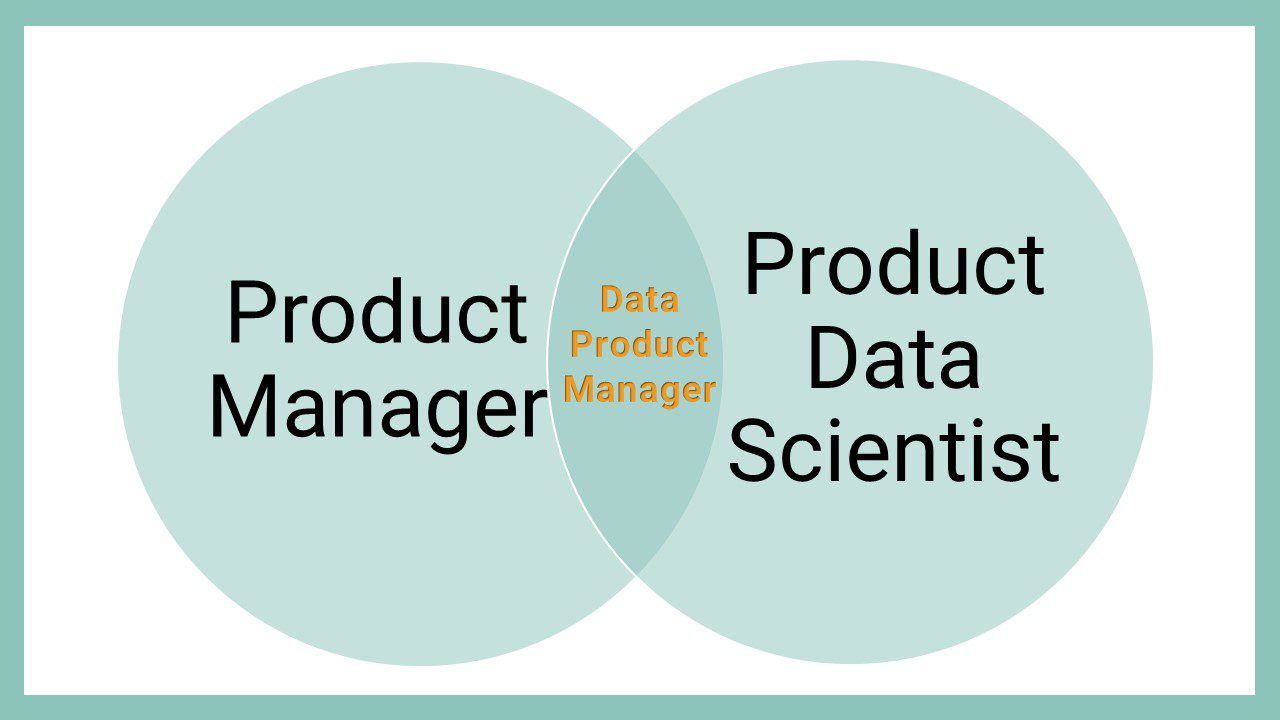
The data product manager is really a hybrid between a product manager and a product data scientist. This means there’s a good bit of data product management; however, there’s also a good bit of data science involvedt.
Generally with data product management, data is the product – either data resources or data expertise. You then use data science and data analytics to actually manage and improve the product overtime.
Caveat: I own a small business and have been running that business for almost a decade. All of the products that I’m managing are either owned by my company or by a client.
This matters mostly in terms of what I’ve seen with respect to teams and in how much time traditional data product managers spend in meetings and in communications with teams. Because I own my own business and I work remotely, we don’t have meetings in my business, which I like!
What Does a Data Product Manager Do?
I’ve broken the work down into three main categories:
- Metrics & Strategy
- Launch
- Products
The metrics inform the strategy, and the strategy drives growth in both product and product launch.
Below is a pretty extensive mind map which I created that plots out each of the aspects of these three main categories of work. But it’s a little bit more complicated because my business runs according to “seasons”, so the requirements around these categories shift according to the seasons of our business.
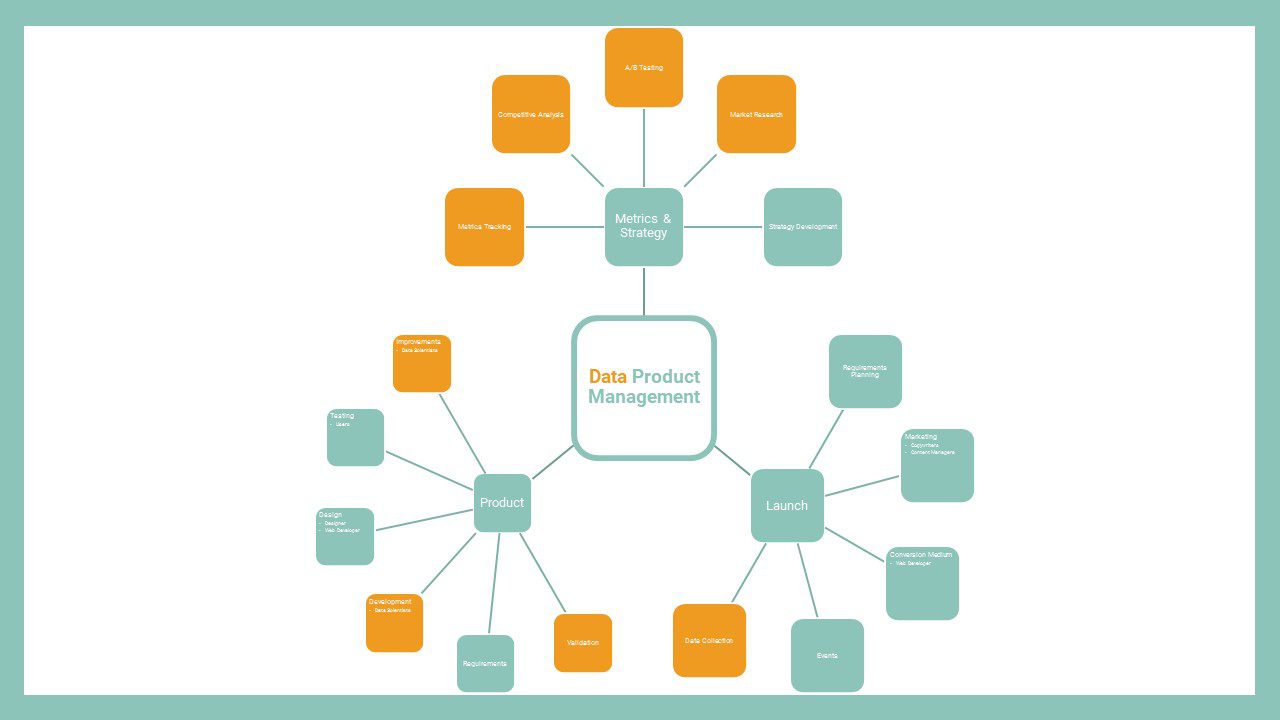
I’m going to break down for you what I’m doing on a daily basis.
I’d love to hear from you! In the comments, tell me a little bit about what you do on a daily basis as a data professional.
What Do I Do As A Data Product Manager?
Looking at what I actually do on a daily basis as a data product manager, it depends on the stage of the lifecycle that my products are in.
1. Work Breakdown by Product
In this type of work allocation, we are updating our course Python for Data Science, central training, one and two that are owned by LinkedIn Learning and I’m the instructor. That’s an information data product that requires data science expertise in order to build. I used to do everything associated with developing that course and I built it from scratch by myself.
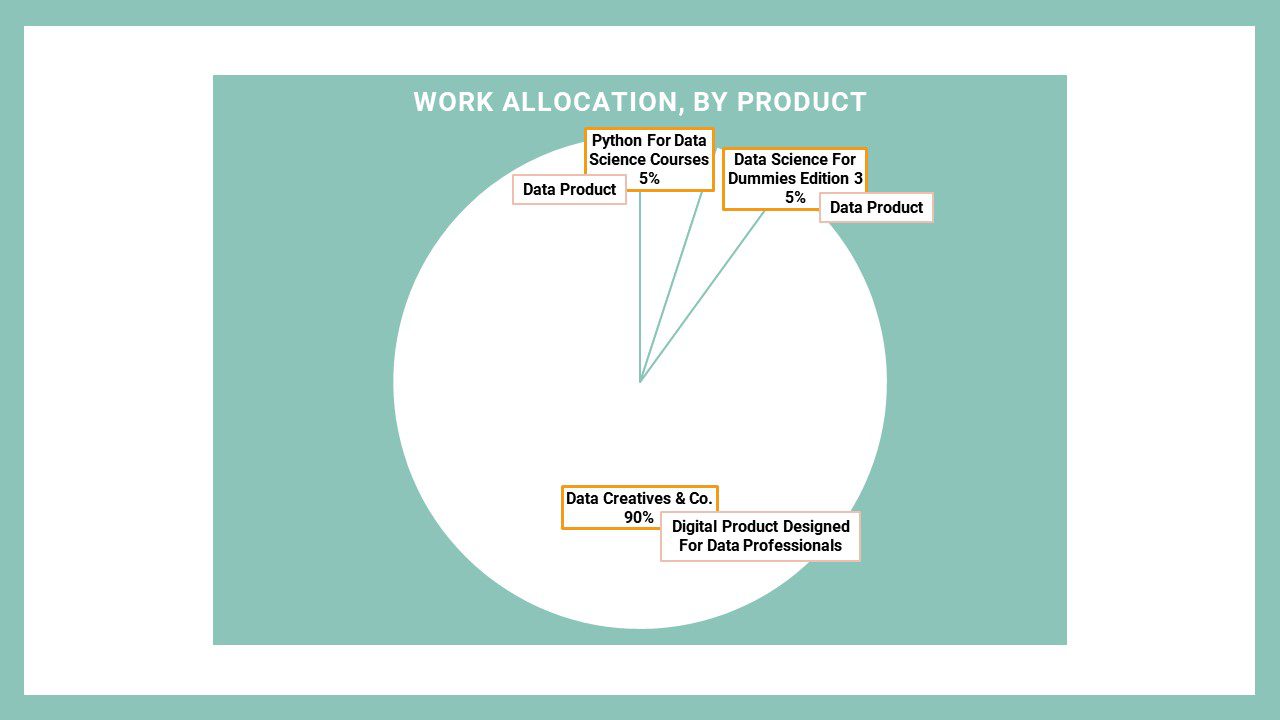
But nowadays, my business has grown to the point that I’m not able to do all the implementation work myself and run the business (which I learned this year while rewriting Data Science for Dummies – the second product that I’m managing.)
Allocating time for each product
Data Science for Dummies is owned by Wiley and I rewrote it a second time since 2014. It’s done and we are in the launch phase. I hired a launch manager that’s why this takes 5%.
The reason why Python for Data Science is taking 5% of my time is because I hired a data scientist to come in and help me with building out the curriculum and it’s an active development. I had to minimize the amount of time I spent there so I could focus on the Data Creatives & Co. course which is not a data product. Python for Data Science is a data product, as is Data Science for Dummies.
Data Creatives & Co. is a course that helps data professionals, supporting them to hitting six figures in the first 12 months of their own data business. It’s data intensive but it’s more of a course designed for data professionals to help them with their new businesses. I am spending 90% of my time on that right now – it’s already developed and we’re in the launch phase.
The reason I didn’t spend much time on Python for Data Science is that I spent the whole year rewriting Data Science for Dummies – which required me to actually write it. (gasp!)
Python for Data Science is client work, so I have delegated a lot of the work to another data scientist. This way I can focus on my main revenue generator for my business, the Data Creatives & Co., which is my signature course since it’s owned by my company.
What I work on a daily basis changes according to the seasons of my business and I’m just going to cover two seasons.
2. Work Breakdown by Sales + Leads Season
I’m spending about 40% of my time in launch efforts – managing the launch and planning the launch of products. 20% of my time in managing my team, and 15% of my time doing product planning and development.
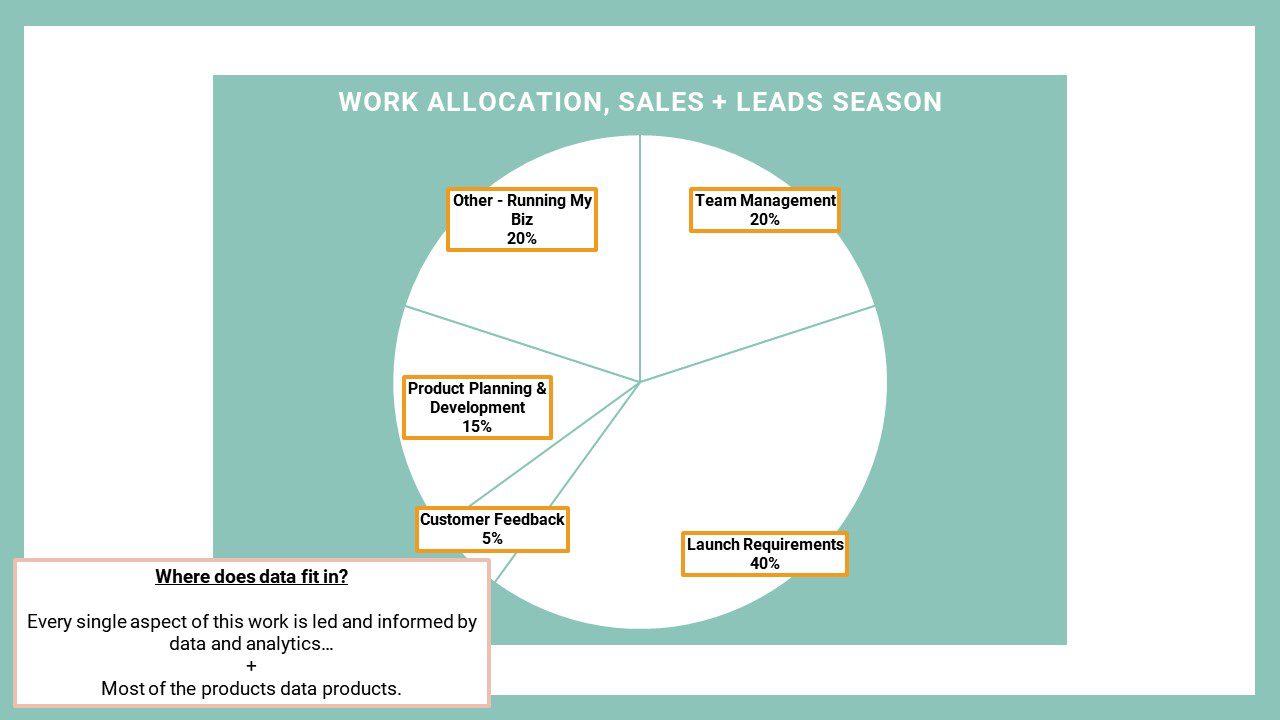
All of the decisions in my business are governed by data analytics and insights. That’s how – beyond data products – I’m using data analytics and making data-informed decisions in all aspects of our product management.
I spend about 5% of my time generating customer feedback and speaking to customers, just getting ideas for how I can improve our products to make them even better. It’s really important to keep a bead on who our customers are and what their needs are.
If you own your own business, it’s definitely important to know your customers and keep improving your products on an iterative basis.
Lastly, because I’m an entrepreneur, the other 20% is allocated to “other”.
3. Work Breakdown by Visibility + Nurture Season
When we are in visibility and nurture season, things are dramatically different.
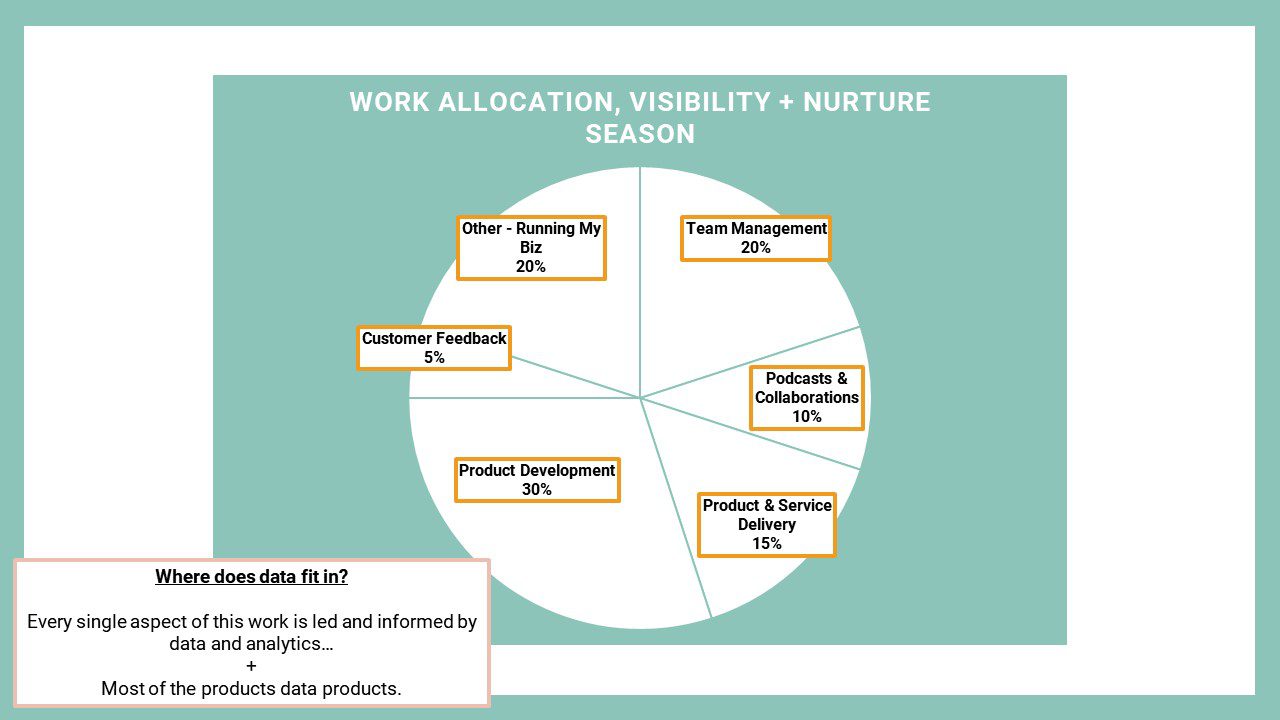
I spend about 30% of my time on actual product development and 20% in managing my team.
The 15% is spent on working on the delivery systems for products or delivering services (which is not a product management role). And because the goal of the business during this season is visibility and nurture, I spend 10% of my time doing collaborations – ie; doing podcasts, live events or guest posting.
The 5% then is spent for customer feedback – just speaking with customers and looking for ways to create new products or improve the products I have.
Lastly, 20% is for “other” – just for running the business.
If you like this post on What a Data Product Manager does on a Daily Basis, then you’ll probably want to check out the video I made on creating the perfect Data Product Manager Resume.
What Does a Data Product Manager Do on a Daily Basis?
Are you wondering now what do I do as a data product manager, daily? Read below to find out and to see for yourself whether you have the same calling!
The 3 Types of Data Product Management Work I Do on A (Near) Daily Basis
As you recall, we have broken down the type of work that data product managers do into three categories:
1. Metrics and Strategy
In this part, I’m mostly responsible for all the metrics and strategy. My team collects the data that I need on a weekly basis, and I use that data to inform strategies moving forward. Also, I have a collection of tools that I use to generate analytics so we can easily see what is working and what’s not working.

Metrics Tracking and Analytics
Once a week I pop in and look at our metrics and analytics. A lot of them are basically describing leads and sales for the business – generating answers to the questions, “what marketing channels are producing leads and sales?”, “why?”, and “which ones are not performing well and why?”
Finance
I also look at finance. I have a team member collecting the data. I’ve got tools and I also have another team member who manages our finance requirements.
Competitive Analysis
I look at all of these metrics and analytics on Tuesday of every week and then I’m continually doing competitive analysis just because we’re always in the process of developing something – whether it be content, products, programs or services that are bringing leads and sales to the business.
I’ve got a variety of tools that I use to get information even about partnerships. I use data to inform and make sure I’m making a good decision on everything that I’m in charge of with our business.
A/B Testing
I do A/B testing on sales pages and my team also does A/B testing for me insie our email tool.
Market Research
I also always do market research – that’s includes competitive analysis and more. I have tools to do this so there’s no need to collect the data raw because tools are there to provide those answers for you.
Strategy Development
Lastly, I do strategy development. By looking at metrics and analytics on a weekly basis, I update our strategy to include more of what’s working and less of what’s not working. I also do testing to explore potential traction in new markets or new channels.
In the image, the nodes are mostly orange. That indicates that these are mostly all data aspects of the role. Strategy development is more of a traditional product management requirement.
2. Launch
Launch work is a pretty important part of product management and having a business. We are aiming for two or three launches per year.
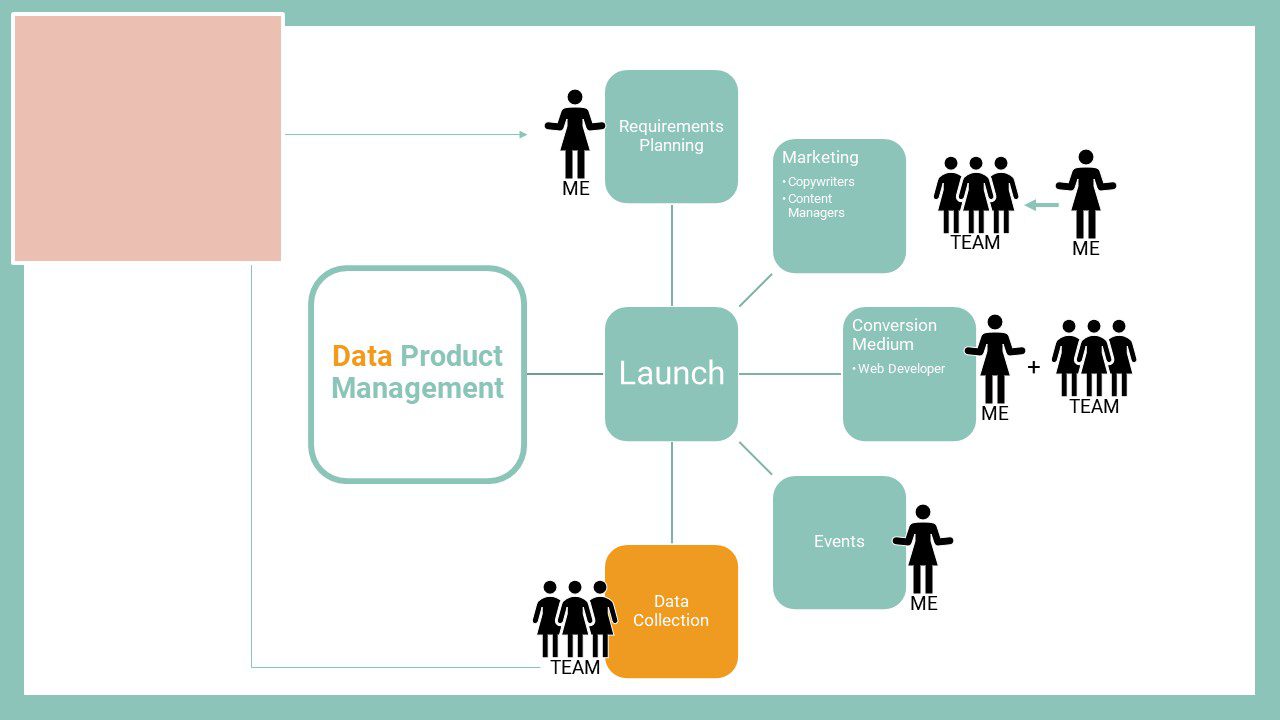
Requirements Planning
I do the requirements planning and then I hand things off to my team in terms of launch marketing requirements.
Marketing
We have copywriters and content managers. The subject matter expertise for data and the entrepreneurship expertise comes from me.
I create a piece of source content and then hand it off to my team for formatting, repurposing, and preparing it the way that it needs to be consumed along our channels. Our content manager publishes the content.
Conversion Medium
Conversion medium would be for launch assets – my launch opt-in, my sales pages, forms and funnels – and I and my team work on this one. It just depends on how much time I have, how many things I’m doing.
Events
For the events, that’s all me because I’m the business owner so I need to show up and show my face.
Data Collection
Data collection is done by the team, but they collect the data and then I see how things performed in terms of conversion, open rates, sales, and leads. I then can make improvements in the next launch cycle.
3. Product
Product is the last category of work. By now we’ve already covered what products we are actively working on.

Just for this context, these products are not new and we’re in version three or higher for all of our products. We’re more in the improvement mode rather than like raw development mode.
Validation
The first thing to do is always validating your product. This is more of a data aspect than a product management task. Validation requires metric analysis and then ultimately sales. It’s looking at conversion rates and stuff, so that’s more data.
Product requirements
Because it’s my business, it’s my vision for the products, so then the requirements come from me. But that’s a more traditional product management requirement.
Design
I do not do my own design. I can do some design, but I have a Professional Designer and a Web developer. My designer creates the aesthetic, the brand, the colors, the fonts, the layouts. The designer sets it up all for me so I can just replicate what she’s doing if I need to design something. I don’t design because I’m not a designer and I have a web developer that helps implement the tech stuff on the backend. I coordinate with my team – I just tell, for example, the designer, what I like and what I don’t like. All the templates and base assets need to be done professionally by a designer. And then my team can use them to populate and create products out of the templates.
Testing
I test my products and my team also tests them. In our case, we already have users because this is version three, so we get feedback from those users on a continual basis and that equals data which we then cycle back through to make improvements to the products on the next round.
Improvements
The majority of our products are data products, data science products, and information products. The improvements to data science products are done by data scientists. I have another data scientist working with me at this point to help me with some things. For my business mentorship and information products – that’s 100% me!
We have a group where I’m bringing in a data scientist because I don’t have enough time to work on all of my data products myself. Data science products are way easier to find help with because there are tons of data professionals out there available to build data science implementation curriculums. On the other hand, our business products contain content that’s actually coming straight from my brain, so it’s a lot harder to delegate.
You've reached this far...
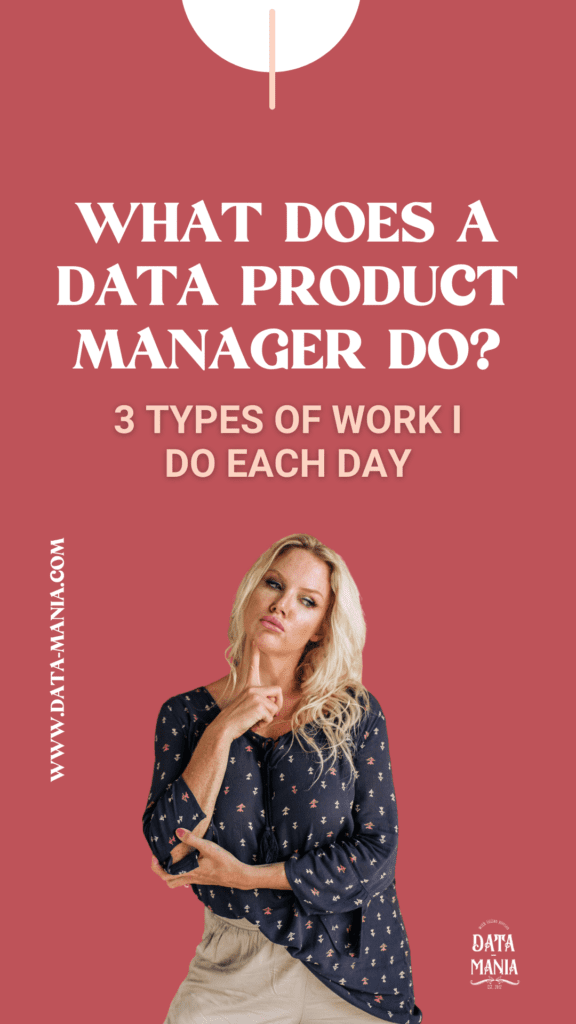 Congratulations on making it to the end, because now I’m going to share with you how you can make a company-themed data product manager resume in under 15-minutes…. I talk about this over in the video on the data product manager resume, but basically, I created a FREE data product manager template for you over in Canva, so you can just go in and add your details and then change out the colors and fonts so that your resume is branded for the company you’re applying to.
Congratulations on making it to the end, because now I’m going to share with you how you can make a company-themed data product manager resume in under 15-minutes…. I talk about this over in the video on the data product manager resume, but basically, I created a FREE data product manager template for you over in Canva, so you can just go in and add your details and then change out the colors and fonts so that your resume is branded for the company you’re applying to.
More resources to get ahead...


